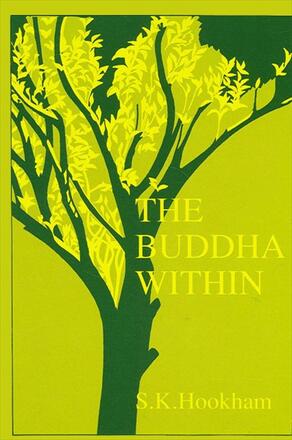Acknowledgments
Yogin Khenpo Tsultrim Gyamtso's Spontaneous Verses on the Subject of Rangtong and Shentong
1: General Introduction
The Omniscient Dolpopa's Prayer that Unties the Vajra Word Knots
Section One—The Issues
2: Introduction to the Rangtong-Shentong Distinction
2.1 The Origin and Significance of Buddhist Commentarial Traditions
2.2 The Rangtong/Shentong Distinction
2.3 The Meaning of Rangtong
2.4 The Meaning of Shentong
2.5 The Importance of the Rangtong-Shentong Distinction
3: Emptiness from the Shentong Point of View
3.1 Progressive Stages of Meditation on Emptiness
3.2 The Final Stage—Shentong (Yogacara Madhyamaka)
3.3 No Shentong Without a Proper Understanding of Rangtong
3.4 Problems of Definitions of Terms
4: The Shentong View of Absolute Reality
4.1 Buddhajnana
4.2 Inseparable Qualities
i. Inseparable Qualities of the Dharmakaya
ii. The Concept of Uncompoundedness
iii. Inseparability and the Spontaneous Existence of the Buddha Qualities
4.3 Buddha Activity
5: Means of Apprehending Absolute Reality
5.1 Faith
i. Faith and Buddhajnana
ii. Faith and Direct Experience
iii. Direct Experience as Valid Cognition
5.2 Non-conceptuality (nisprapanca)
i. Nisprapanca as Awareness Experienced in Meditation
ii. Nisprapanca as Freedom from Extremes
iii. Nisprapanca as Non-conceptuality in the RGV [1.9]
iv. Nisprapanca in the Tantras
5.3 The Two Realities and the Two Visions
i. Satya
ii. Paramarthasatya
iii. Samvrtisatya
iv. Ultimate Reality is not Dependent Arising
v. Own Nature and Other Nature (Svabhava and Parabhava )
vi. The Two Realities Inseparable
vii. The Two Senses of Manifestation and Emptiness
viii. The Importance of the Distinction
ix. The Relationship Between the Two Realities
x. The Two Visions—Precisely What Is and the Extent of What Is (Yathavadbhavikata and Yavadbhavikata )
6: The Nature of Beings
6.1 Base, Path and Fruit
6.2 Tathagatagarbha
i. The Shentong and Rangtong Approaches Compared
ii. The Term "Tathagatagarbha"
6.3 Self
6.4 Gotra
i. The 'Cut-off' Gotra and the Three Yanas
ii. Gotra as both Cause and Emptiness
7: The Third Dharmacakra: Neyartha or Nitartha
7.1 The Third Dharmacakra
i. The Three Dharmacakras
ii. The Third Dharmacakra as Nitartha
iii. Kongtrul's Distinction Between the Two Kinds of Nitartha Sutra of the Third Dharmacakra
iv. Dolpopa's Analysis
v. The Third Dharmacakra is Not Cittamatra
7.2 Neyartha and Nitartha
i. Rangtong Explanations of Neyartha and Nitartha
ii. The Terms "Neyartha" and "Nitartha"
iii. The Ratnagotravibhaga —Neyartha or Nitartha?
Section Two—Historical Background
8: The Shentong Tradition
8.1 The Jonangpas
i. The Jonangpa Lineage
ii. Some Opponents and Supporters of Shentong
iii. The Mountain Dharma—Ocean of Nitartha (Ri chos nges don rgya mtsho, RC)
iv. Comparison With Later Shentongpas
v. The Essence of the Controversy
vi. Shentong is Secret Oral Instruction
8.2 Sources of Shentong
i. The Tibetan Inheritance
ii. Some of Dolpopa's Indian Sources of Shentong
iii. Other Views on the Indian Sources of Shentong
iv. The Brhattika
v. Nagarjuna's Stotra and Karikas
vi. How Shentong Relates to Later Developments of Buddhism in India
vii. The Term "Great Madhyamaka"
viii. Tantric Shentong
8.3 Kongtrul and the Rimay Tradition
i. Kongtrul
ii. The Rimay Tradition
9: Traditions of Interpretation of the RGV and RGVV
9.1 Introduction to the Ratnagotravibhaga and Ratnagotravibhagavyakhya and Associated Traditions.
i. Authorship and Rediscovery
ii. Maitreya
iii. The Importance of the Maitreya-Asanga Connection
iv. The RGV as a Synthesis of the Tathagatagarbha Sutras and the Prajnaparamita Sutras
v. The Vyakhya (RGVV)
vi. Transmission to Tibet
9.2 Matters Arising from the Introduction to Kongtrul's Commentary on the RGV.
i. The Two Tibetan Transmission Lineages of the RGV
ii. Questions Arising from Kongtrul's Commentary
iii. Other Commentators Not Mentioned in the Initial Praises
iv. Gampopa and the Sutra and Tantra Mahamudra
v. Rangjung Dorje and the Mahamudra-Dzogchen Synthesis
Section Three—A Shentong Interpretation of the RGV and RGVV and a Translation of Kongtru!'s Introduction to His RGV Commentary
10: A Shentong Interpretation of the RGV and RGVV—A Paraphrase With Comments
10.1 The Title and its Implications
10.2 General Introduction to the Seven Vajra Bases
10.3 Vajra Bases 1–3: The Three Jewels
10.4 Vajra Base 4: The Dhatu (Element)
Causes and Conditions for Purification
The Four Paradoxes
The Three Reasons
The Element Arranged in Ten Points
The Nine Examples
The Essence of the Doctrine
The Purpose of the Instruction
10.5 Vajra Base 5: Enlightenment
10.6 Vajra Base 6: Qualities
10.7 Vajra Base 7: Activity
10.8 The Benefits
11: Translation of the Introduction to Kongtrul's RGV Commentary
12: Conclusion
Appendix 1: Works by Western Scholars
Appendix 2: Prakrtisunyata, Svabhavasunyata and Parabhavasunyata in Rangtong and Shentong Terms
Appendix 3: Further Details on the Three Svabhava and the Three Kinds of Emptiness as Found in the SNS
Appendix 4: The Sandhinirmocanasutra: Résumé
Appendix 5: Some Points of Comparison Between Rangtong Commentators on RGV
Appendix 6: The Five Dharmas of Maitreya
Abbreviations
Notes
Conventions Used
Glossary of Terms
Bibliography
Index
